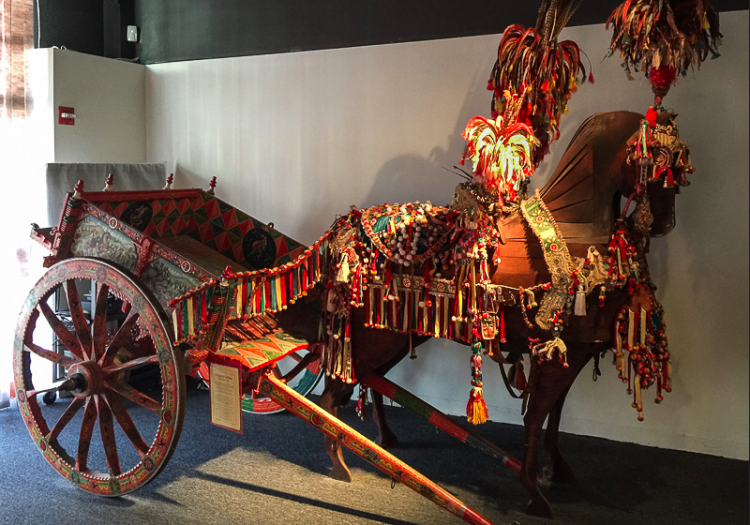
About this Work
About the Artist
Our Carretto Siciliano was transported from Sicily in 1985 by Manfredi Polizzi, himself a native Sicilian. His widow, Lee, donated it to the Museo Italo Americano in his honor in 1988. The cart was built and decorated in a rustic floral style in the early 1920s. It is in its original condition, except for the section underneath, which has been repainted. It was renovated in 1985 when it was outfitted with new trappings for the horse and a new axle assemblage. The side panels, painted by the Sicilian folk artist Tano Ferrara from Aci S. Antonio (Catania), depict the battles of the Christian Crusaders Fioravante, Rizieri, Fiovo, Grifone and Aquilante against the Sarazens.The cart also includes the finimenti, a harness for the horse with tassels, brightly color features and all the trimmings. And that harness has been placed on the horse Ermengarda, designed and created by Paula Pisano Cohen with help from Gordon Holt.History of The Sicilian CartCarts were introduced to Sicily by the ancient Greeks and reached the height of their popularity in the 1920s, eventually giving way to the automobiles and trucks. Each Sicilian province built them in their own style. Traditional carretti were used for many things. Carretti del Lavoro were used for work, carrying people, wine, produce, wood and anything else that had to be taken from one place to another. Show carts or Carretto di Gara were used for special occasions. Horses pulled the carts in the cities, donkeys in the rough hilly countryside.Every carretto has two wheels and each wheel has twelve spokes, six curves of wood and one center hub called da mieolo, made of walnut and bound by two metal rings on a metal hub. The wheel is fixed to the metal shaft by a nut or rannola that screws onto the axle to hold the wheel to the shaft.
